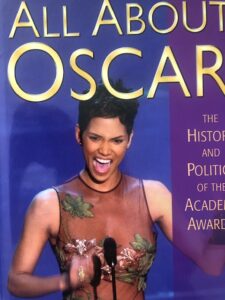We are decalring 2015 as the Year of the Actor. To celebrate this event, we will be surveying all the performers who have won the Best Supporting Actor and Best Supporting Actress from the first year this category was established, in 1936, to the present.
Walter Brennan
The first winner, Walter Brennan, was one of the finest character actors in American film history, a performer who had appeared in over 200 screen and TV roles.
Brennan’s considerable talents show in diversity of roles, though he is best remembered for his portrayals in Westerns, such as trail hand Nadine Groot in Red River (1948) and Deputy Stumpy in Rio Bravo (1959), both directed by Howard Hawks, both starring John Wayne.
He was the first actor to win three Oscar Awards and the only person to have won three Supporting Actor Awards, in 1936, 1938, and 1940. (Several actors have won two Supporting Actor Oscars).
In the early years of the Academy Awards, extras were given the right to vote. Brennan was extremely popular with the Union of Film Extras, and since their numbers were overwhelming, he won each time he was nominated. Some say that his third win led to the disenfranchisement of the Extras Union from Oscar voting.
He appeared in over 100 films (plus just as many TV roles) during a career that spanned nearly five decades.
Brennan is one of three men to win three acting Oscars. The other two are Jack Nicholson (two lead and one supporting) and Daniel Day-Lewis (three lead Oscars).
Walter Andrew Brennan was born on July 25, 1894 in Lynn, MA, less than two miles from his family’s home in Swampscott.
In school, Brennan became interested in acting and began to perform in vaudeville at the age of fifteen. While working as a bank clerk, he enlisted in the U.S. Army and served as a private with the 101st Field Artillery Regiment in France during World War I.
After the war, he moved to Guatemala and raised pineapples before settling down in Los Angeles.
During the 1920s, he made a fortune in the real estate, but he lost most of his money during the Great Depression.
He began taking extra parts in 1925 and then bit parts, including The Invisible Man (1933), the Three Stooges short Woman Haters (1934), and Bride of Frankenstein (1935).
In the 1930s, he began appearing in better films in more substantial roles. He received the very first Oscar for Supporting Actor as Swan Bostrom in the period film Come and Get It (1936). Two years later he portrayed town drunk and accused murderer Muff Potter in The Adventures of Tom Sawyer.
Throughout his career, Brennan played characters considerably older than he was in real life. The loss of teeth in a 1932 accident, rapidly thinning hair, thin build, and unusual vocal intonations made him seem older than he was.
In Northwest Passage, he wore a special dental prosthesis which made him appear to have rotting and broken teeth.
For French director Jean Renoir’s first American film, Brennan played the top-billed lead in Swamp Water (1941), a drama co-starring Walter Huston and Dana Andrews.
In Sergeant York (also 1941), he played a sympathetic preacher and dry goods store owner who advised the title character (Gary Cooper, in his first Best Actor Oscar role).
In 1942 he played reporter Sam Blake who befriended and encouraged Lous Gehrig (also played by Cooper) in Pride of the Yankees, directed by Sam Wood.
Sidekicks
Brennan was particularly adept at playing sidekicks, as, for example, the “grumpy old man” in films like To Have and Have Not (1944), Bogart’s vehicle which introduced to the screen Lauren Bacall.
Though mosly known for playing sympathetic men, Brennan also played some notable villains, such as Judge Roy Bean in The Westerner (1940) with Gary Cooper, for which he won his third best supporting actor Oscar.
He played ‘Old Man’ Clanton in My Darling Clementine (1946) opposite Henry Fonda.
He appeared in the Oscar-nominated Cinerama production How the West Was Won (1962), as the murderous Colonel Jeb Hawkins in the James Stewart episode.
End Note:
Brennan died on September 21, 1974
This column excludes Brennan’s rich work as a TV actor and his ultra-conservative right-wing politics.
Come and Get It (1936): First Supporting Actor Oscar
Read our review of Come and Get It











